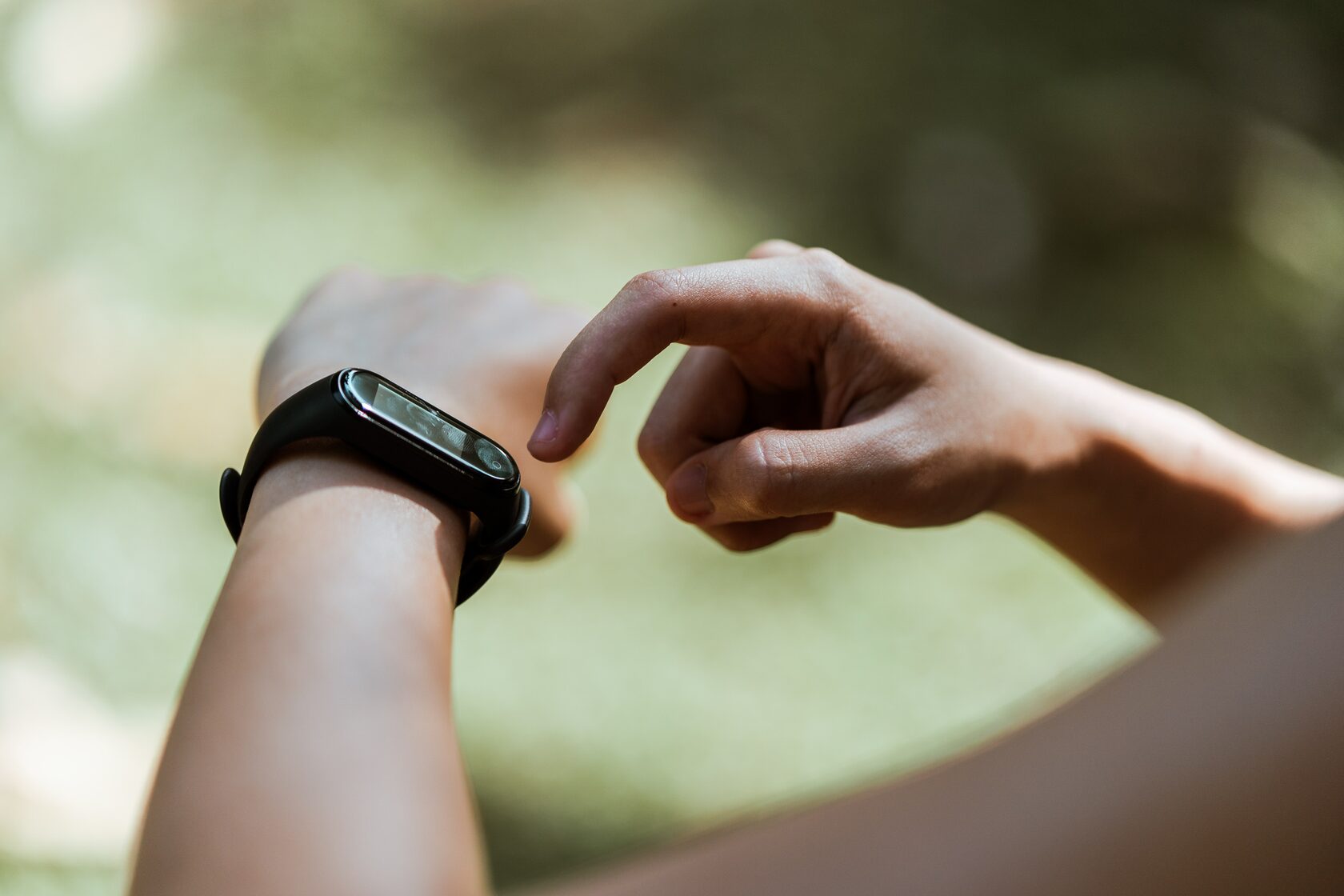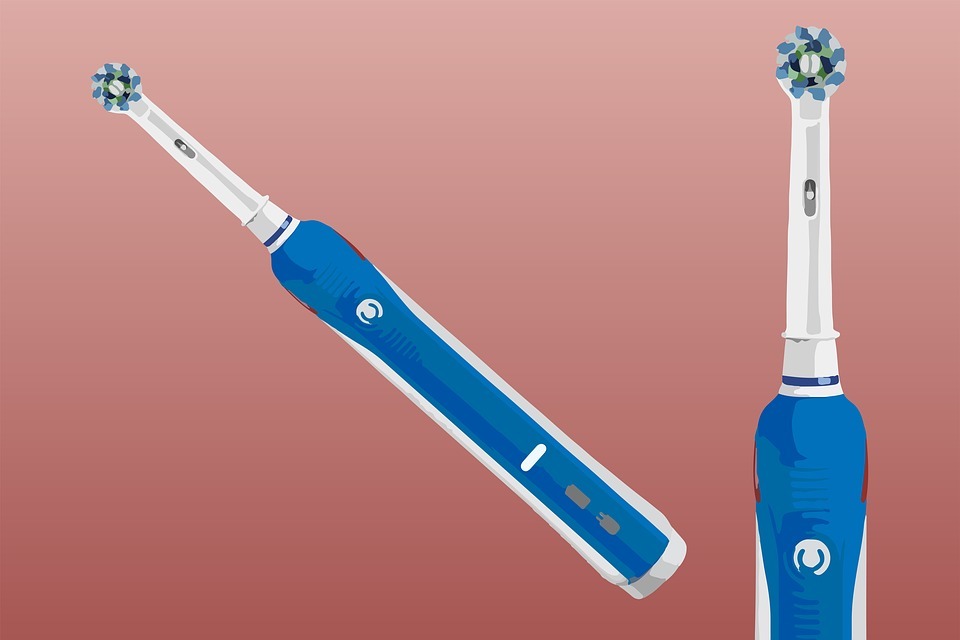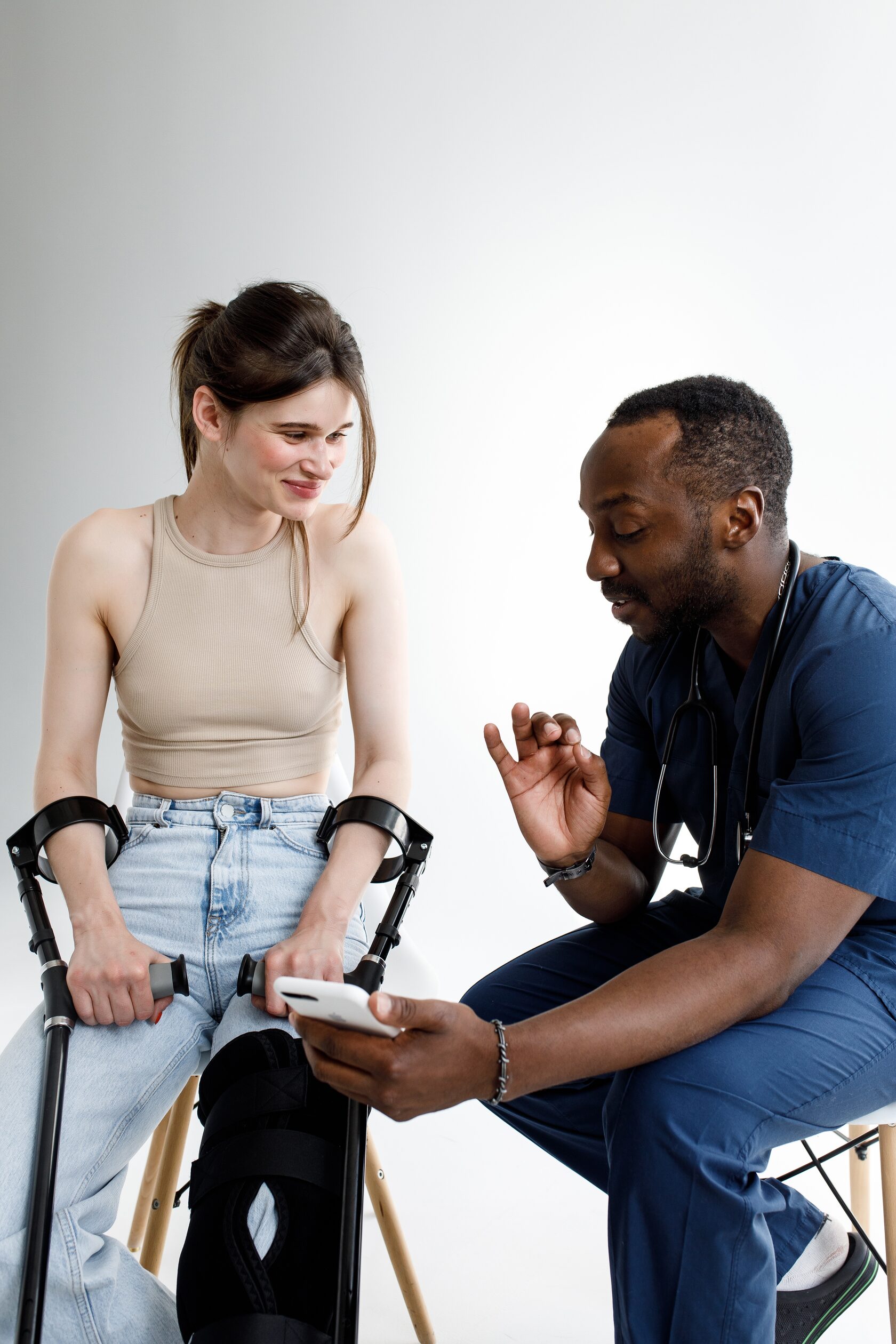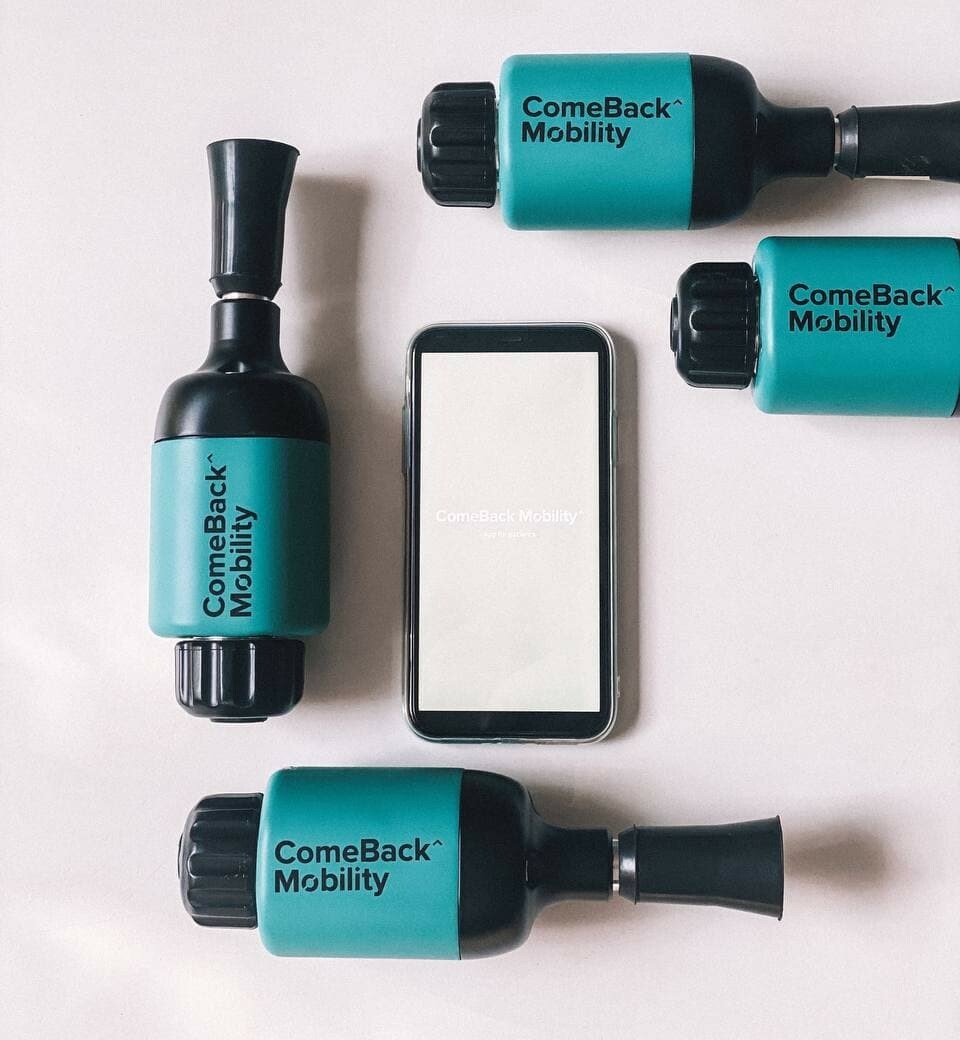The RPM approach has a solid basis in the profound technology literacy of patients and the easily accessible devices of the 21st century.
BIOFEEDBACK DEVICES





Under conditions of rapid progress in nurse healthcare technology, the concept of remote patient monitoring has emerged to advance the patient-provider relationship. Remote patient monitoring, or RPM, is a telehealth delivery approach where the patient-provider information is shared in real time or in delayed response.
RPM devices are evolving with great speed to increase patients’ accessibility to healthcare services. This is especially relevant now, during COVID-19 variant outbreaks, when personal interactions may need to be limited but without limiting the access to healthcare. RPM devices fill this gap.
Types of remote patient monitoring devices





Remote patient monitoring devices can be divided into two groups: wearable and portable.[4]


Examples of portable devices are a personal spirometer, and an electric toothbrush that monitors oral health.


In some cases, the two means are combined in one product.[4] The concept of healthcare delivery that is relevant for both types of remote patient monitoring is telecommunication and telehealth.[4]
Benefits of remote patient monitoring
Remote patient monitoring devices can provide almost “instantaneous wireless connectivity'[1]
Another benefit of remote patient monitoring is the simultaneous implementation of artificial intelligence for collecting, processing, and analyzing large volumes of data within a short period of time.
As a result, this approach can enhance the process of clinical decision-making and reduce the incidence of medical errors.
This increases the efficiency and efficacy of healthcare and expands access to healthcare especially in the underserved and rural communities.
While gaining popularity within different healthcare settings, remote patient monitoring is critically important in assisting orthopedic patients. The rationale is that orthopedic patients spend the initial critical part of the recovery process at home. During this time their rehab progression should be routinely checked by healthcare providers, however constraints of the healthcare system, and/ or the patient’s distance from the healthcare provider, do not allow this. In this situation, remote patient monitoring is the solution to the problem.
Practical application of the telehealth concept ‘remote patient monitoring’
Preparing for orthopedic surgery





Narrowing the focus to the field of orthopedics, it is important to discuss how the devices are utilized at the different stages of healthcare services. Patients begin using remote monitoring software beginning at the pre-operative period.
Pre-operative period





During this period, orthopedists and patients use remote healthcare technologies for virtual access to important data related to the pending orthopedic surgery and the postoperative treatment plan.[5]
Before an orthopedic surgery, patients are asked to fill in a personal health data survey, reporting pain severity, stiffness, limitations in motion, and other parameters. Using this data patients and healthcare professionals work as a team to identify desired clinical health outcomes and expected patient goals.[2]
Patients also use RPM systems to send their patient-reported outcome survey (PRO) to the orthopedist for consideration, evaluation, and professional feedback. This survey is used to compare pre operative presentation with the post operative gains.[2]
Telehealth approaches increase the safety of patients and medical personnel especially in the face of contagious diseases. RPM notifications allow medical staff to better prepare for their patient’s presentation, creating a safer environment for the whole hospital. Specifically, patients are encouraged to monitor and report possible symptoms of COVID-19 and/or other infections, or health conditions that may require postponing the surgery.[5]
In this regard, remote patient monitoring has an important advantage compared to eye-to-eye visits.
Surgery period





During surgery, RPMs are used by medical personnel to document many aspects of the surgery. This includes documenting patient vitals, details about the prosthesis or hardware used in the surgery, and important operative data. Documenting this perioperative information is important as it helps the orthopedist create the best rehabilitation course for the patient.[5]
Post-operative period





During the post operative period, RPS systems are again utilized for patient surveys and questionnaires which compare patient symptoms with preoperative levels. Also, the devices are implemented to track patients’ compliance with a treatment therapy.[4]
Health providers use both results to track their patient’s treatment progression and identify potential rehabilitation concerns before they become a bigger problem. Telehealth technology enhances the patient-provider relationship by providing faster follow-up appointments which is important if a medical concern is flagged on the RPM devices.
This approach is safer and more cost-efficient for the patient. The implementation of orthopedic telemedicine is positively praised by patients. According to the recent orthopedic randomized controlled trial, patients who used orthopedic telemedicine during rehabilitation reported the same level of satisfaction with received services as a control group under a conventional treatment approach.[4]
The favorable political environment for telehealth services





The interest in remote patient monitoring software is impressive. In 2019, even before the onset of the pandemic, the US market of remote patient monitoring technologies demonstrated an annual growth rate of about 20%.[4] Exploring the targeted audience, the researchers concluded that the lion’s share of investments (almost 90%) was given for developing devices for chronically ill patients.[4] Such a decision is not surprising. Health conditions associated with long recovery time or life-long healthcare issues imply prolonged interaction with customers, their loyalty, and a high percentage of returning customers.
The expansion of RPM industry is stipulated by loosened restrictions in reimbursement for telecommunication and telehealth services. Current Procedural Terminology Codes (CPT) were revised and expanded by the Centers for Medicare and Medicaid Services (CMS) for the US federal healthcare delivery programs.[4]
Specifically, codes 99091, 99453, 99454, 99457, and 99458 allow health providers to receive reimbursement for consulting and training patients on how to set up and utilize their patient remote monitoring devices. Also under the new regulatory changes, healthcare providers can be paid for “reviewing remotely collected RPM data, and consulting patients regarding their RPM data”.[4] The discussed regulatory changes created a favorable environment for further expansion of the remote patient monitoring industry.
Remote patient monitoring under conditions of the pandemic
The approach of conducting remote patient monitoring is well-aligned with the contemporary social restrictions, such as social distancing and stay-at-home recommendations, stipulated by COVID-19. That is why, it is not surprising that the use of remotely delivered healthcare services has grown drastically during the last year. For example, during April 2020 when the first serious wave of the pandemic affected the US community, every fifth claim for healthcare service was made via telehealth technologies.[4] Apart from the US, the implementation of telehealth and remote patient monitoring approaches was boosted by the pandemic in China and India.[3] In these countries, the use of remote health delivery methods has gained strong support at the government level.[3] In a word, COVID-19 has facilitated the implementation of telehealth options at the political and healthcare levels.

The approach of conducting remote patient monitoring is well-aligned with the contemporary social restrictions, such as social distancing and stay-at-home recommendations, stipulated by COVID-19. That is why, it is not surprising that the use of remotely delivered healthcare services has grown drastically during the last year. For example, during April 2020 when the first serious wave of the pandemic affected the US community, every fifth claim for healthcare service was made via telehealth technologies.[4] Apart from the US, the implementation of telehealth and remote patient monitoring approaches was boosted by the pandemic in China and India.[3] In these countries, the use of remote health delivery methods has gained strong support at the government level.[3] In a word, COVID-19 has facilitated the implementation of telehealth options at the political and healthcare levels.

A successful example of post operative remote patient monitoring: ComeBack Mobility
– Smart Crutch Tips & Mobile Apps ensure quality post-operative care to patients by providing accurate weight-bearing feedback during the crutch walking aspect of rehabilitation;
– Tracking gait data;
– Providing a telehealth component for rehabilitation progress.
How does it work?
Set weight-bearing program
In the ComeBack Mobility Doctor App, the physician prescribes a weight-bearing program appropriate for the patient’s injury or post operative plan. This is how the Smart Crutch Tips ‘know’ the optimal loading point for the involved leg during the patient’s gait rehabilitation program.Сontrol the axial load
Using the approach of remote patient monitoring, Smart Crutch Tips & Mobile Apps ensure real-time weight-bearing biofeedback for orthopedic patients. If a patient exceeds the prescribed weight restriction of their healing leg, the smart crutch tips will inform him of that via light, voice, or vibration signals. This ensures that the next step is within the guidelines of the rehabilitation program, thus reducing potential complications associated with limb overloading.Tracking patients’ treatment compliance
A patient is advised to follow a weight-bearing program using feedback cues provided by tips and app. Simultaneously, real-time data is sent to their physician to monitor postoperative progress. If the physician notices concerning trends in the gait data, he can immediately modify the weight-bearing program and affect the patient’s risky gait cycle.Addressing patients’ concerns
Utilizing the ComeBack Mobility Patient App, patients can communicate their rehabilitation concerns to their healthcare providers and in turn receive timely professional consultations which help maintain the rehabilitation progress. The patients also receive peace of mind when their concerns are quickly addressed by a healthcare provider.Adjusting the load made on the injured leg
Patients can easily set up individual daily goals by combining automated feedback delivered by smart crutch tips and physician’s feedback.
Conclusion





The industry of telehealth services, including remote patient monitoring software, demonstrates drastic growth and expansion in the United States and around the world. Its benefits of cost-effectiveness and advanced safety for patients and medical personnel alike has garnered it legislative support as a necessary extension of the healthcare system.
The ever-increasing patient satisfaction surveys about receiving medical services via telecommunication fully support this movement. Under the conditions of the pandemic, Smart Crutch Tips & Mobile Apps provide professional tracking of patients’ treatment compliance. This RPM device educates the users on how to achieve optimal weight-bearing that meets their postoperative rehabilitation needs, and thus improves their recovery rate.
To learn more about Smart Crutch Tips & Mobile App, visit ComeBack Mobility.
SOURCES
- Patient compliance with touchdown weight bearing after microfracture treatment of talar osteochondral lesions
- Patient compliance with postoperative lower extremity touch-down weight-bearing orders at a level I academic trauma center
- (PDF) Weight Bearing Compliance after Foot and Ankle Surgery
- Factors Affecting Compliance With Weight-Bearing Restriction and the Amount of Weight-Bearing in the Elderly With Femur or Pelvic Fractures
- Application Of Calculating The Maximum Permissible Load On The Femur After Osteosynthesis
- Current advances in training orthopaedic patients to comply with PWB instructions
- Force Plates – Do you need one?
- Different in-shoe devices for partial weight bearing
- Effectiveness of a Simple Auditory Feedback Insole






